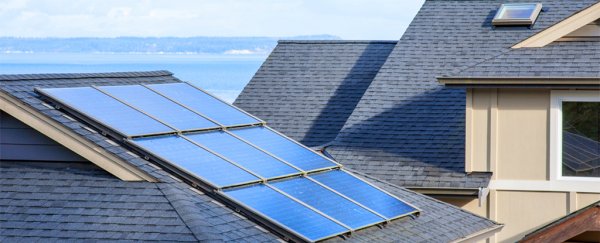California just became the first state in the US to require all new homes to be built with rooftop solar panels.
The California Energy Commission hearing room was packed full on Wednesday as the commission voted unanimously in favor of the proposed rule.
Starting on 1 January, 2020 any new home that's three stories tall or shorter, be it a single-family dwelling, apartment building, or condo, will need to include energy-harvesting solar panels on top.
There are a few exceptions to the rule. Homes that are in the shade and houses where the roof is too tiny to hold panels won't need to comply.
The California Energy Commission says that the new rule should cost the average single-family homeowner an additional US$10,000 or so in upfront building costs.
But builders put the costs of adding on solar to all new homes much higher.
C.R. Herro, vice president of environmental affairs for Meritage Homes told the Orange County Register that solar can add between $14,000 and $16,000 to the price of a new home, and that's not including add-ons like more expensive energy efficient windows, lighting, and appliances.
Experts believe the costs of installing solar panels pay for themselves over time.
But how quickly the investment yields returns depends on a whole host of factors, including how big your solar panels are, the price of energy where you live, and how much sun you get.
The California Energy Commission estimates that the average single-family homeowner soaking up solar would nearly double their investment in long-term energy bill savings, raking in more than US$19,000 in energy costs over a 30 year period, as Reuters reported.
It's possible that with the new rule in place, the costs of solar could go down, and both panels and installations could get a lot cheaper.
Right now, roughly one in five new homes in the Golden State has rooftop solar panels. This new rule would shift the equation.
San Jose-based solar panel company SunPower said that the first of its kind solar rule will increase demand for residential solar power by 50 percent, as Bloomberg noted.
If you're curious how your own home might do with solar, you can calculate your own rough estimate here, with the EnergySage calculator.
This article was originally published by Business Insider.
More from Business Insider:
